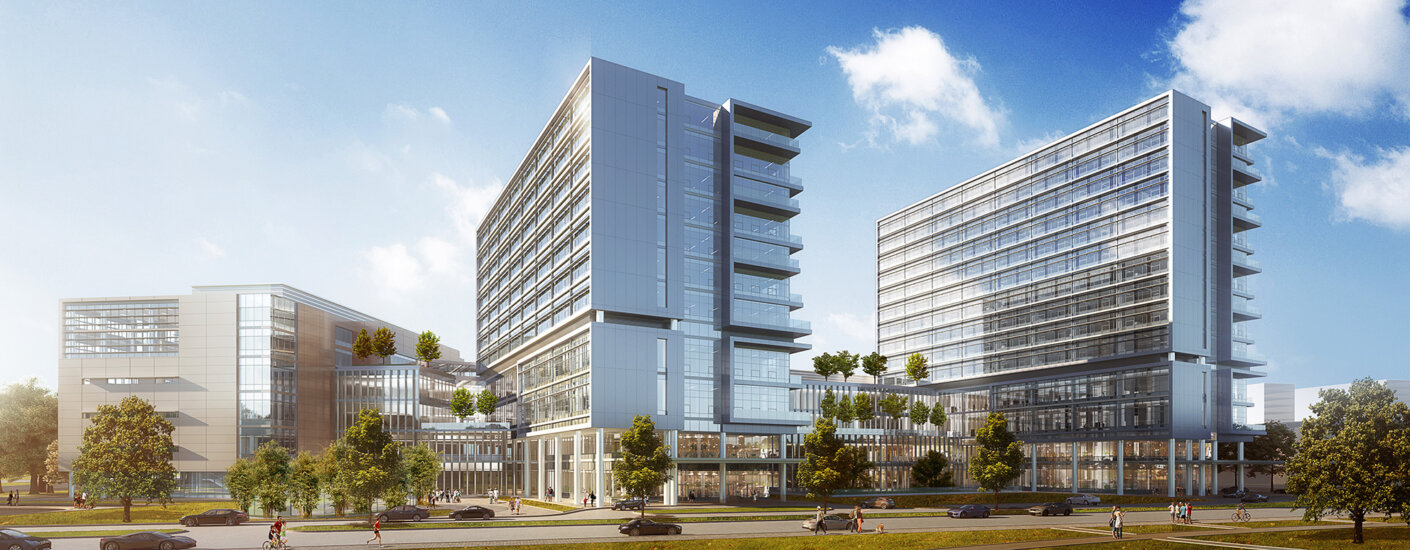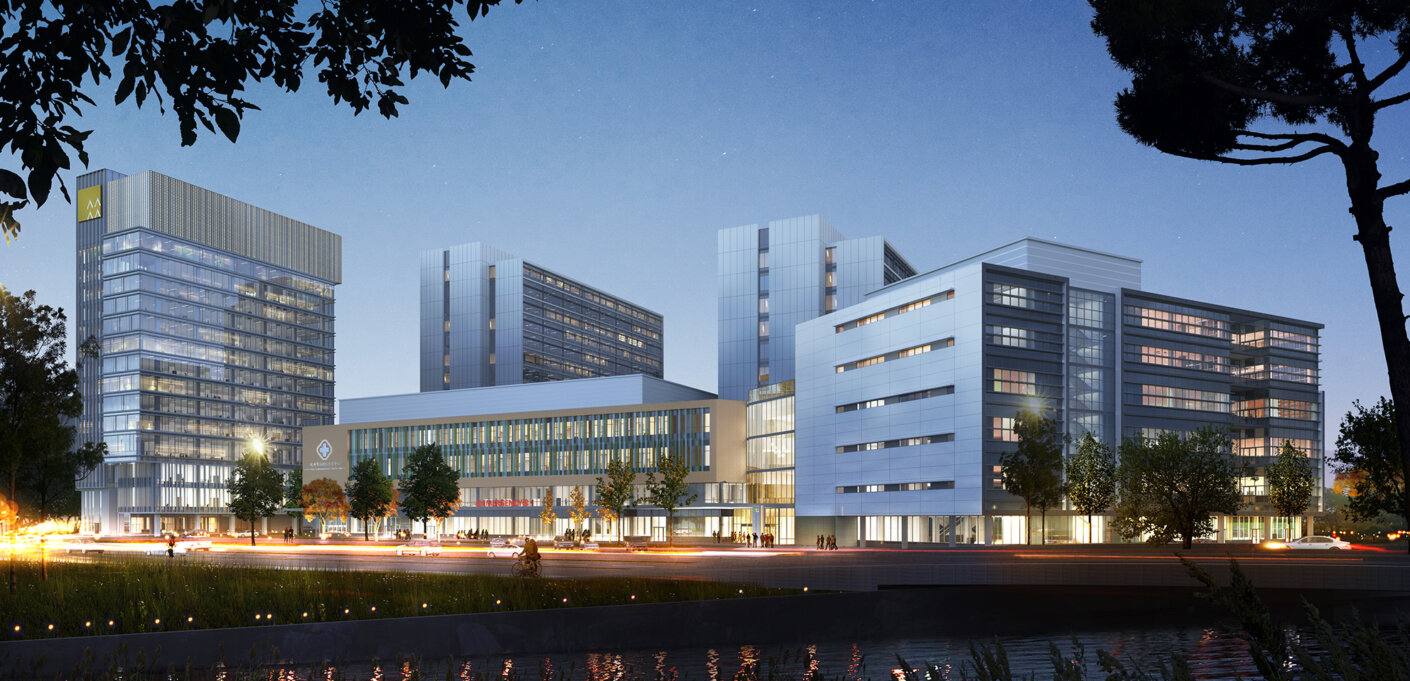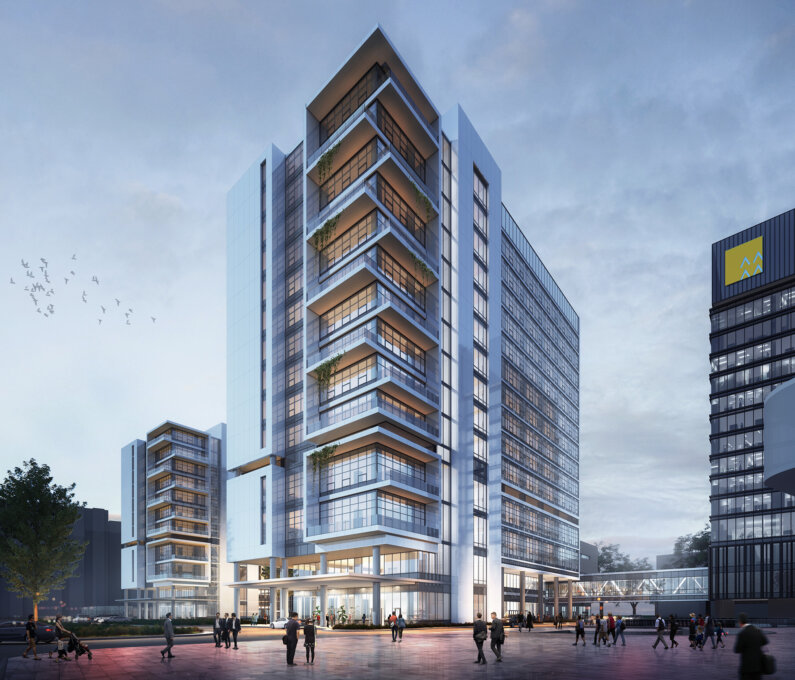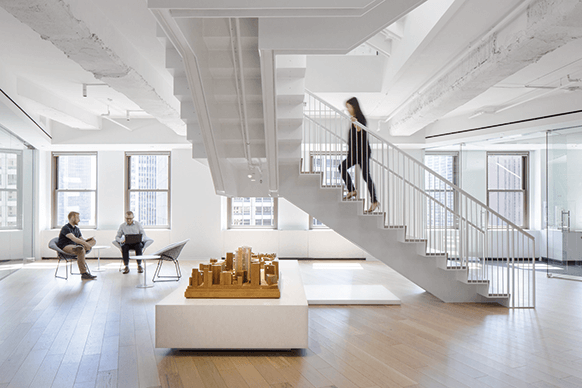“It’s Mission Impossible!”
Gong Zheng can’t recall how many times he and the team said this about Hangzhou China Resources International Medical Center—an ambitious new health district located in the capital of China’s Zhejiang province.
In only nine months, the 3.1-million-square-foot (285,300 square-meter) “intelligent healthcare town” moved from concept to groundbreaking. When complete in 2022, it will provide 800 acute care beds, a research tower, 143 beds in a rehabilitation center, a health management center, and even residential apartments. An outdoor park with footpaths along the river will connect patients of the hospital to the waterfront, too—a design element of particular importance in local Liangzhu culture.
The project’s groundbreaking represents the first phase of an even larger wellness-focused development along the city’s historic Grand Canal that promotes preventative healthy living. Despite its sheer size, scope, and complexity—not to mention its accelerated timeline—what was once thought to be a “mission impossible” is well on its way to becoming a “mission complete.” And it’s all thanks to a dedicated team of design, planning, technical, and medical professionals who have found a way to successfully collaborate with each other from opposite sides of the world.
The medical center is being developed by China Resources Land (CR Land) and China Resources Healthcare (CR Healthcare) in consultation with Brigham Health International (BHI), Spaulding International (SI), and medical consulting group Partners HealthCare International (PHI). The Zhejiang Provincial People’s Hospital (ZPPH) will initially operate the new facility, and provided valuable input on local clinical practices. Working with the CR Land/Health, the BHI/SI/PHI team, and the clinicians from the ZPPH, Perkins&Will developed the site master plan for the larger development as well as the medical planning concepts and architectural design for the new hospital and ancillary buildings.





